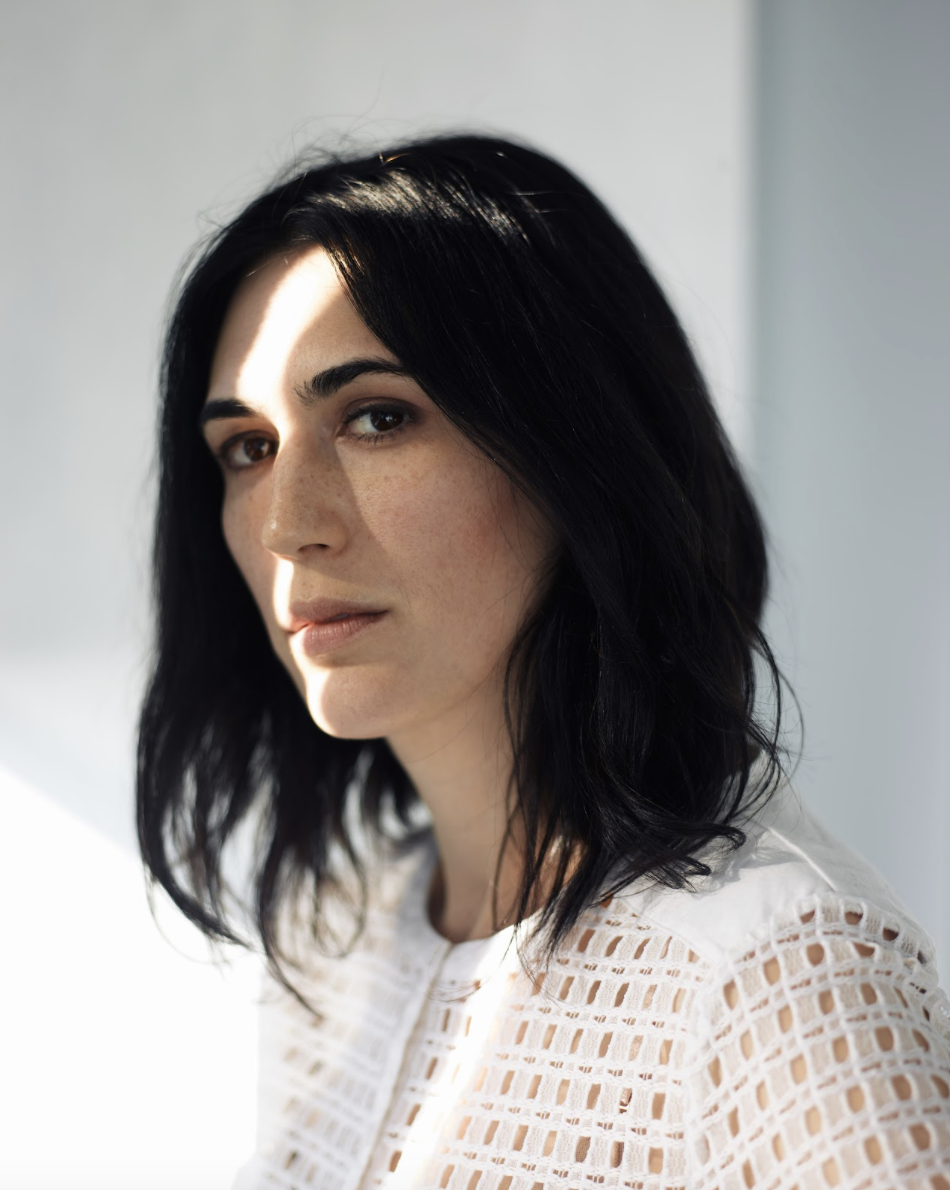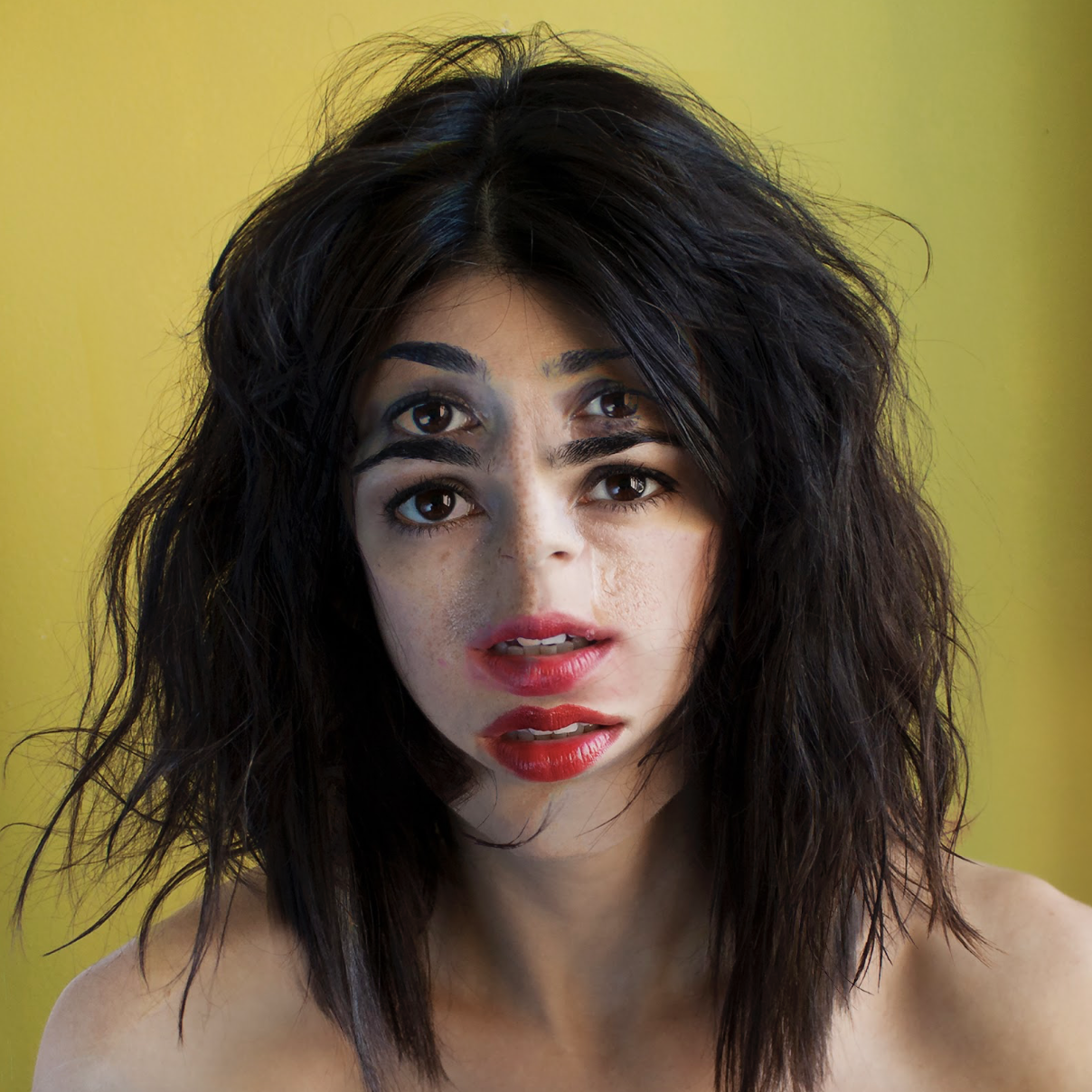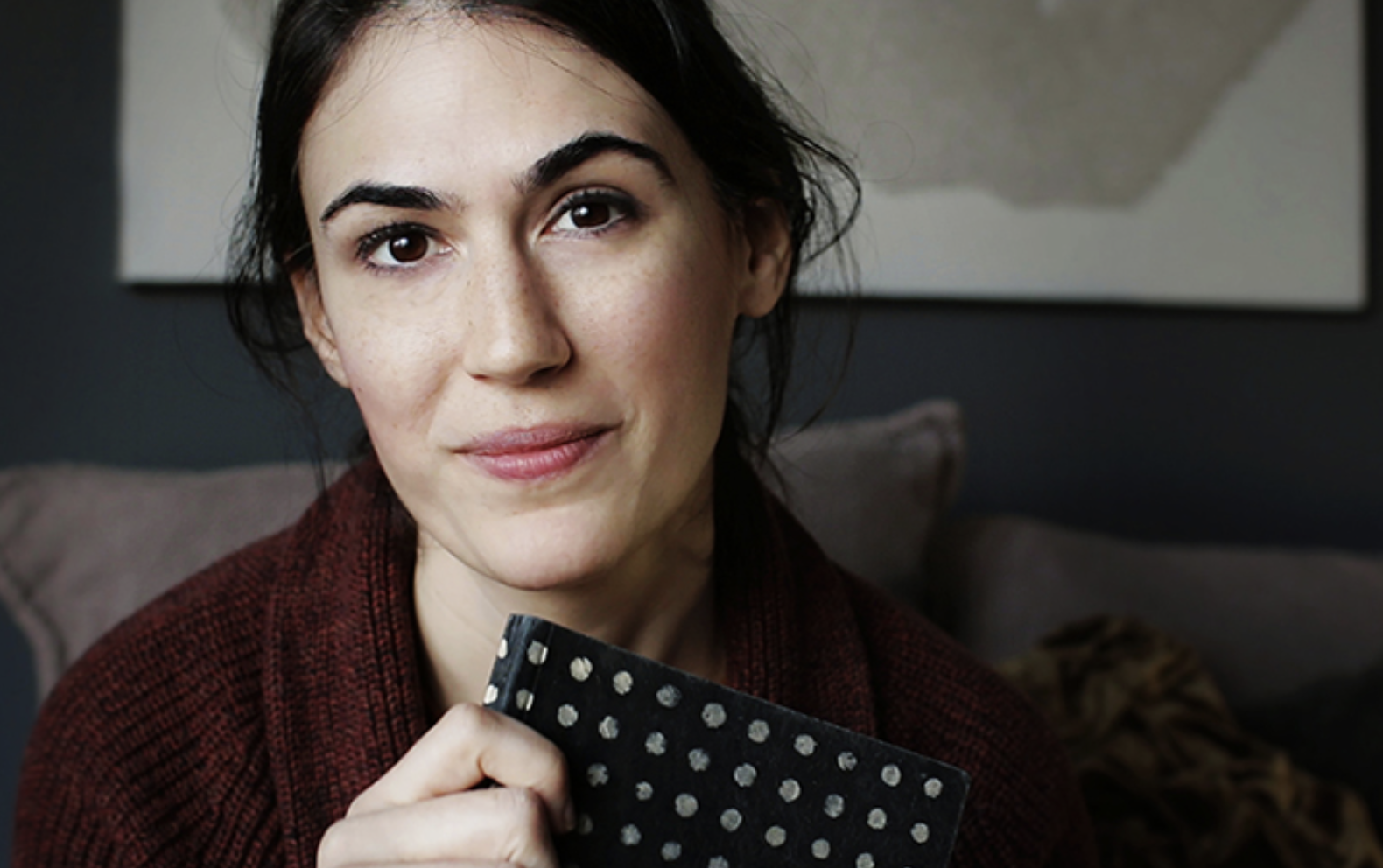Caroline Kessler, judge and mentor for ic0-D Adobe Design Achievement Awards (ADAA)
Caroline Kessler - judge and mentor for ic0-D Adobe Design Achievement Awards (ADAA), Storyteller, Photographer, and Video Editor - on Mentoring and Using Personal Projects to Disrupt the Status Quo
Caroline is a storyteller, photographer, and video editor based in New York. She is also an actor having worked in film, television, theater, and voice over. Caroline trained at Duke University, The National Theater Institute, International Center of Photography, and Manhattan Edit Workshop. Currently, she serves as a judge and mentor for ic0-D Adobe Design Achievement Awards (ADAA) for photographers and video editors looking to launch their careers with the guidance of respected creative professionals within the ico-D’s and Adobe’s global network.
Check out the interview I conducted with Caroline to find out the story behind her recent online project, Throwback Diary ("The Story of a Life, Told One Diary Entry a Week"); how and why she uses personal projects to disrupt the status quo of how people, as she explained, "view and judge the emotional state—specifically of women—based on how 'perfected' they are"; her experience serving as a judge and mentor for ic0-D Adobe Design Achievement Awards (ADAA), and the impact it's had; and future projects she has in store.
Jasmine: Caroline, thank you for doing this interview. You are a storyteller, photographer, and video editor based in New York. You’re an actor that has worked in a myriad of categories in the entertainment industry to include film, television, theater, and voice over. You’ve trained at Duke University, The National Theater Institute, International Center of Photography, and Manhattan Edit Workshop. Currently, you serve as a judge and mentor for ic0-D Adobe Design Achievement Awards (ADAA) for photographers and video editors who are looking to launch their careers with the guidance of respected creative professionals within the ico-D’s and Adobe’s global network. Tell me some things I might not know about you.
Caroline: I adore sequins, name everything George, and studied astrology hard core for two years.
….but also…
All those things you summarized come from my sixth grade teacher reading Agatha Christie to us, one chapter at a time, at the start of each school day. Before anything, I fell in love with reading and the written word. My mom used to take me on a weekly trip to the mall bookstore—my selection only everlasting the week until we went again. Child me was certain she’d be a writer (and I did write a mystery novel between sixth and seventh grade), an English teacher, or a fashion designer. The last may have had something to do with Barbies…it certainly had nothing to do with my sartorial choices.
Then I discovered acting. I auditioned for a play in seventh grade because my best friend did. And I found tremendous power in the theater. It was a literal platform upon which to be Not Shy. And it offered a new world of language and writers, and a new approach to honoring words. Theater led to film, which led to photography, to editing, to documentary, and some current amalgam of all the above.
Storytelling—the pursuit of language as expression, and expression as language—is the through line.
Jasmine: You focus on nonfiction portraits. I was introduced to your work through your self portrait, “How I See You See Me,” 2017, by Women in the Arts during their week of highlighting “Women in the Arts of Instagram: A Week of Self Portraits.” It immediately prompted me to go searching for more of your art. My journey took me beyond Instagram and to your website where I stumbled upon the “Take Your Pick” 4x4 panels that included the self-portrait that intrigued me initially. I found myself shifting my eyes to see you differently in each photograph, trying to find an emotion— but what I saw I couldn’t be sure of. It left me wondering, who is the woman behind the photograph and what does she want me to see? What does she want me to understand?
Caroline: I’m so glad you were intrigued by the piece! That particular collage is born of a series of 18 self-portraits to which I oft return. They were meant to progress fluidly, each image shifting by a single degree of emotion and self-presentation. Putting them in different combinations creates new conversations between the images, changing the piece each time it’s approached. As for what I want you to see? I think you had my ideal response, but I’ll get to that via your next question.
Jasmine: Tell me about this particular project and why you decided to do it.
Caroline: My 20's were riddled with crippling depression. My first attempt at seeing a therapist was a bit of a discordant clusterfuck.
One day I saw her after my HR appointment at a law firm. I was dressed for the corporate-ness of it. She remarked, “You’re wearing makeup: you must be feeling better.”
I remain stunned by that comment to_this_day. That our outward expression have anything to do with our interior experience; that makeup was the Correct Way to Present Oneself to the World; that a woman says so; and a mental health professional, at that. I can tell you the day I arrived after painting my bedroom, leaning streaks of (hopefully) dry paint against her office sofa, she did not remark upon my appearance as any indication of my mental health.
The self-portrait series is my response to how we view and judge the emotional state—specifically of women—based on how “perfected” they are.
Specifically: it’s two sets of nine images. The self-presentation ranges from incredibly polished to incredibly disheveled. In one set the emotional range begins with the polished face as ecstatically happy, and ends with the disheveled face in extreme agony. In the other set, the emotional range is the exact opposite. In the middle, both sets appear to meet in neutrality and stasis (without makeup.)
They’re intended for a gallery setting, where you can walk along a wall, and gradually experience the emotional shift through the faces and composures. Then you could walk along the next set of photos and get the exact opposite sense of her emotional being. It’s designed to be a confusion of which woman is “happy.” Perhaps crying with reckless abandon is a great joy. Perhaps the mask of perfection feels like jail.
Perhaps people disregard the non-descriptive middle expressions in a rush to get to something more “telling.”
If you didn’t know what you were meant to see, then I’d count that a win.
Both as the artist— whose intention was to point out you can’t interpret another human; and as the viewer—to be open enough to not have a concrete conjecture. It was a bit of a “fuck you” in concept, but I hope the end result is curiosity and empathy.
Jasmine: I want to discuss your diary project. Pulled from your website, the excerpt reads: “her recent online project, Throwback Diary ("The Story of a Life, Told One Diary Entry a Week"), was a year-long exploration of a life told through 25 years of personal writing.” Tell me about the decision to release something so personal. A level of personal some people would burn their diaries over before publishing them for the world to preview at-will.
Caroline: I have ease with personal art because it saw me through dis-ease.
I began using myself as a subject at a time when I was so depressed and secluded, that making a photograph, or essay, or video of myself, was a way to prove I existed and took up space.
Throwback Diary—essentially me reading 25 years of my life to total strangers on the Internet—was a way to create a project from a current viewpoint of survival and strength, which I hoped could offer the same to others.
You know when someone asks, “What would you go back and tell younger you?” I wanted to foster a safe environment where we could learn from one another when the lessons are most needed.
Why wait for an issue to reach the past tense to begin healing?
I’ve had some surprising and debilitating things happen in my life, that maybe could have been less stifling had I known how someone else proceeded. In social media we’re encouraged to “share,” but we create digital avatars of ourselves. You see with the rising popularity of documentary film—or of a podcast like Beautiful/Anonymous—this curiosity to go deeper and explore the universality of experience: there’s a true yearning for intimacy, as much as voyeurism. David Wojnarowicz said, “We can all affect each other, by being open enough to make each other feel less alienated.” That’s it, really.
Was it hard to read entries about depression, cancer, and betrayal from the voice to which they were happening? It was nothing compared to the events themselves. Throwback Diary taught me a more powerful compassion, and in return I was overcome and overjoyed by everyone who submitted their own stories.
So if that’s why I spent 25 years writing my life down—for that honest exchange and compassion with total strangers—worth it.
(Okay, honestly, it was super-hard to read the entry about my first-ever date: February 25, 1995. Turns out I’m only one step removed from a giggling 13-year-old!)
While I no longer make new videos, the project continues and I always post new submissions.
I don’t know what ultimately happens with these diaries. For a while I thought they’d make a great parenting resource, but I’m not sure my life will take that path. I know I can never destroy them. I have a maternal affection for younger me: she survived. But she still needs gentling. I’m still responsible for how I treat her.
Jasmine: Caroline, let’s talk mentoring. How has serving as a judge and mentor for ic0-D Adobe Design Achievement Awards (ADAA) impacted you?
Caroline: ico-D’s support of young talent through the Adobe platform is awesome. What excites me about the mentoring and the judging process, is the slight possibility I may help someone grow by introducing them to an artist they’ve yet to encounter. The kind of work that makes your breath catch—that reminds you you’re part of a history and community of explorers.
If I can be a shortcut to a young artist finding an influence that speaks to them in a really personal, influential way—that would rock my world.
Jasmine: Have you found that through mentoring, areas of your life have been awakened that otherwise would not have been?
Caroline: It’s giving me a front row seat to the rebranding of Millennials that I otherwise would not have had. I’m witnessing the evolution of that group: an awakening, an empowering. A shift from trying to be everything, to trying to encompass everything. They’re finding their artistic voices at a much younger age than I. It's heartening and makes me hopeful.
Jasmine: Tell me one word that would describe your journey thus far, Caroline.
Caroline: Serpentine.
Jasmine: Are there any current or future projects you’d like to talk about?
Caroline: I certainly had no intention of going straight into another hyper-personal project, but that just may come to pass. I’m currently watching a series of eight MiniDV cassettes from exactly 10 years ago. I had filmed them with the intention of making a Ross McElwee-inspired documentary. Now I’m wondering what present-day envelope I can devise to use this footage, as well as the writings and self-portraits from that time. It’s strange, because I often consider 2007 one of my Lost Years (where I was so depressed I can hardly remember a thing about them), but it’s right there. Some of the footage is about as bad as I could expect, and some of it is just delightful. I like taking back control of that time. Does that mean I make a one-person account of mental health? I don’t think so. That doesn’t sound entertaining, or particularly artful. I’m talking with a creative director I greatly admire about collaborating on an exhibit, instead of a documentary. There’s something about an immersive experience that makes a lot of sense for my particular kind of exploration. These are early days. I have some encouragement to make a show of the self-portraits, and I will forever and always be writing personal essays for That Memoir I’ll Someday Finish.
And I’m always excited for new collaborations! If you have an idea, get at me.
Jasmine: Where can you be found online/off-line?
Caroline:
YouTube channel: Throwback Diary.
I’m on Instagram (@caroline_kessler), which is a pretty decent representation of where I am offline—generally at movies and art galleries. And posing with my cats. And photographing whatever book I’m enjoying. Sometimes I dance tango. I tried to take up birding; but, alas, I don’t think it’s for me.
Hey—thanks for reaching out! A pleasure to be a part of your community.
Jasmine: Thank you, Caroline!
*Interview originally published June 5, 2017




